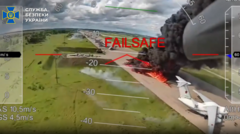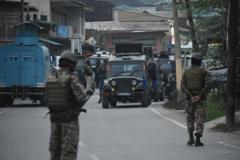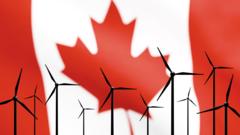New research reveals that modifying flight paths can significantly reduce the warming effects of contrails, which contribute to climate change, at a minimal cost. This topic is set to be presented at the upcoming COP29 conference in Baku.
Cost-Effective Solutions Proposed to Mitigate Jet Contrails' Climate Impact

Cost-Effective Solutions Proposed to Mitigate Jet Contrails' Climate Impact
Aviation experts suggest simple alterations could eliminate the climate-damaging vapors of jet contrails for less than £4 per flight.
Aviation experts are advocating for straightforward solutions to address the climate-damaging vapors generated by jet planes, following a study indicating these contrails could be effectively eliminated for a negligible cost of less than £4 per flight. These jet condensation trails, commonly referred to as contrails, have been surrounded by conspiracy theories suggesting they are involved in mind control or disease transmission; however, scientists clarify that the real concern is their warming effect on the climate.
Researchers highlight that contrails essentially double the warming attributed to the fossil fuel consumption of aviation, as discussed in a recent study by the Transport & Environment campaign group. These vapor trails form when a plane travels through cold, humid air, with the exhaust vapor condensing on unburned fuel remnants, similar to how breath condenses in chilly weather. Although the phenomenon has been understood for decades, the acknowledgment of their climate impact has only gained traction recently.
Carlos Lopez de la Osa from the campaign group noted that contrails create artificial cloud layers that prevent heat from escaping into space, warning that their warming effect mirrors that of carbon emissions from aviation. Consequently, the UN climate conference COP29 in Baku will address this issue for the first time, aiming to foster a clearer understanding amidst prevalent misinformation.
Conspiracy theories surrounding contrails, falsely dubbed "chemtrails," claim that they are used for nefarious purposes, such as population control or widespread disease propagation. Matteo Mirolo of Breakthrough Energy stressed the need for clarity on this issue, arguing that the claims have no scientific basis.
Data from the Transport & Environment study suggests a significant portion of contrail-induced warming—80%—comes from a mere 3% of flights. By strategically adjusting the flight paths of select aircraft, researchers believe it is possible to cut contrail warming by more than half by 2040, all while maintaining an economical cost-effectiveness.
Geographical location, altitude, and time of day all critically influence the climate impact of contrails, with regions like North America, Europe, and the North Atlantic contributing significantly to global contrail warming. Evening and nighttime flights are particularly troublesome, with winter months producing the most harmful trails.
Lopez de la Osa emphasized the feasibility of implementing these minor adjustments into existing flight planning, stating, “It’s arguably one of the simplest climate solutions up for discussion at COP29.” As the conference approaches, researchers hope to promote awareness of both the contrail problem and the potential solutions, showcasing how addressing this issue could result in significant climate benefits at a fraction of the investment typically directed toward sustainable aviation fuels.





















